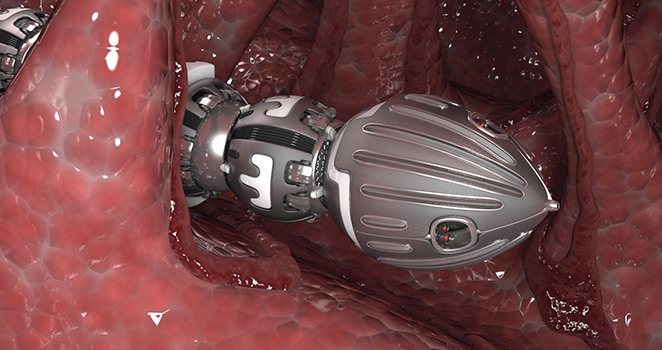Da Vinci Robotic Surgery

What is da Vinci Robotic Surgery?
The da Vinci robotic surgical system is an advanced surgical procedure that uses minimal invasion incisions. With the da Vinci robotic surgical system, a surgeon will use a 3D high-definition vision system and small instruments that rotate and move better than a human hand. The da Vinci robotic surgical system enables a surgeon to operate with precise vision and control.
The Federal Food and Drug Administration (FDA) approved the da Vinci robotic surgical system for use on July 11, 2000. The system was approved for laparoscopic surgeries and was the first robotic surgical system that was approved for use in surgical rooms in the United States. The da Vinci robotic surgical system costs $1.5 million and is based on two components, which include:
- A console that is used for viewing and control.
- A robotic surgical arm unit, which includes three or four arms based on the type of model.
Intuitive Surgical manufactures the da Vinci robotic surgical system. The system is classified under tele surgical devices, which means a human is in control of the motions of the robot.
The da Vinci robotic surgical system uses the most up-to-date robotic and surgical technologies available. When a surgeon uses the da Vinci robotic surgical system, he or she is in complete control throughout the entire procedure. The da Vinci robotic surgical system has been used on more than 3 million individuals across the world.
Advantages of the da Vinci Robotic Surgical System
The da Vinci robotic surgical system integrates open surgery with minimally invasive surgery. The da Vinci robotic surgical system uses high-definition 3D cameras that enable a surgeon to see inside a patient's body better than if he or she was performing open surgery. There are many other advantages to the da Vinci surgical system such as:
- Minimal discomfort
- Reduced scarring
- Smaller incisions
- Faster recovery
- Reduced risk for infections
- Lower risk for postoperative complications
When hospitals use the da Vinci robotic surgical system, it will decrease the number of hospital stays by half, which will reduce hospital costs by about 33%. Intrusive Surgical stated that only 80,000 of the 230,000 individuals who have been diagnosed with prostate cancer would not undergo surgery as treatment because of the high risk that is involved with invasive surgery. With the minimally invasive surgical methods used with the da Vinci robotic surgical system, more patients with prostate cancer may choose to undergo surgery as a form of treatment.
How the da Vinci Robot Works
Although robotic surgeries will vary based on several factors, the process of da Vinci robotic surgery will have a surgeon sit at a console in the operating room, which is where he or she will control the da Vinci robot. A tiny surgical camera and other medical instruments, which are about the size of a dime, will be inserted inside the patient with small incisions. The camera enables the surgeon a 360-degree view that is magnified for a clear image. The console where the surgeon sits will have hand and foot controls that are used to control the robotic arms that are connected to the surgical instruments. During the procedure, a second surgeon is at the operating table to ensure the surgical instruments are correctly placed in the patient.
Safety Measures
One of the primary focuses of Intuitive Surgical is safety. Before the procedure begins, a surgeon's head must be correctly placed in the viewer. If a surgeon's head is not in the viewer correctly, then the da Vinci robotic surgical system will lock and not be able to move until the surgeon's head is placed in the correct position. If the surgeon's head moves out of the correct position anytime during the procedure, the machine will lock until his or her head is again in the viewer.
A zero-point movement system is used throughout the surgery to ensure the robotic arms do not move or pivot above the place of incision, which will prevent any unintentional tears. The power sources comes equipped with a battery that enables the robotic system to continue for twenty minutes after power is lost, which will give the hospital or surgical center plenty of time to regain power.
Every instrument that comes with the da Vinci robotic surgical system has a chip that will prevent the use of any instruments that are not manufactured by Intuitive Surgical. The chips also contain information about every instrument that enables precise control and records the instruments use, which will accurately determine when it will need to be replaced.